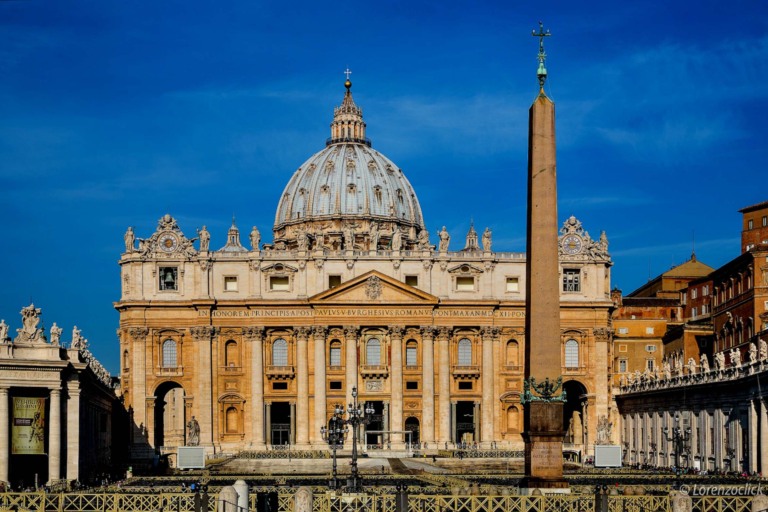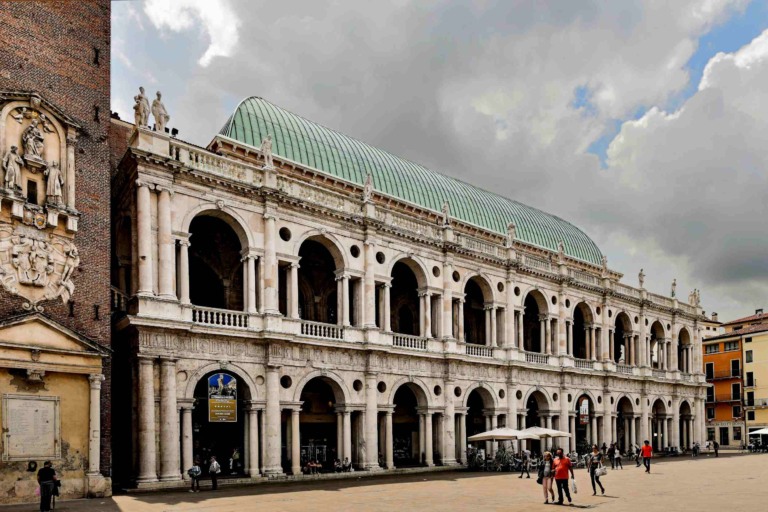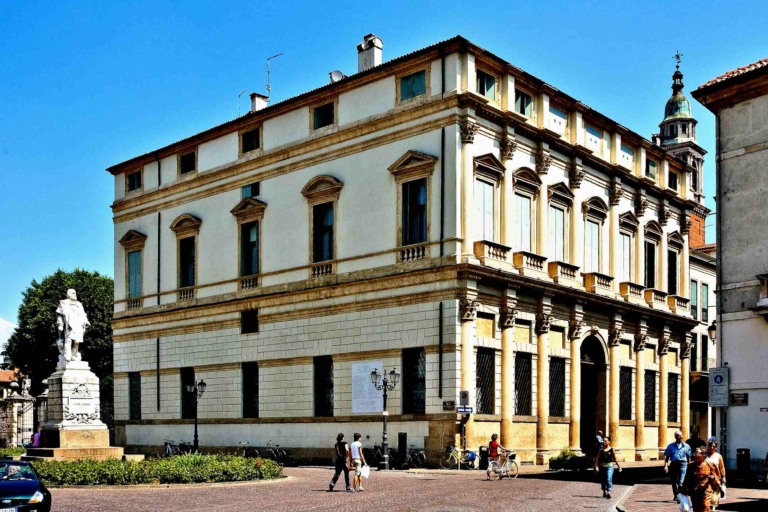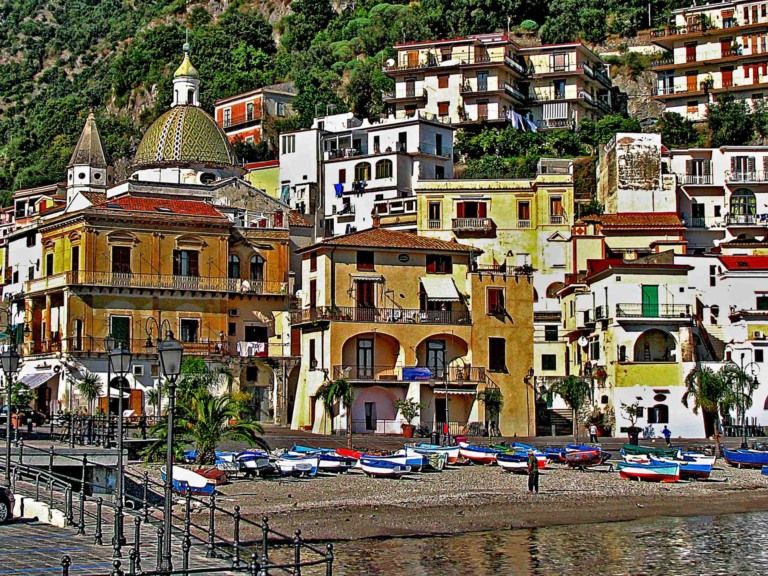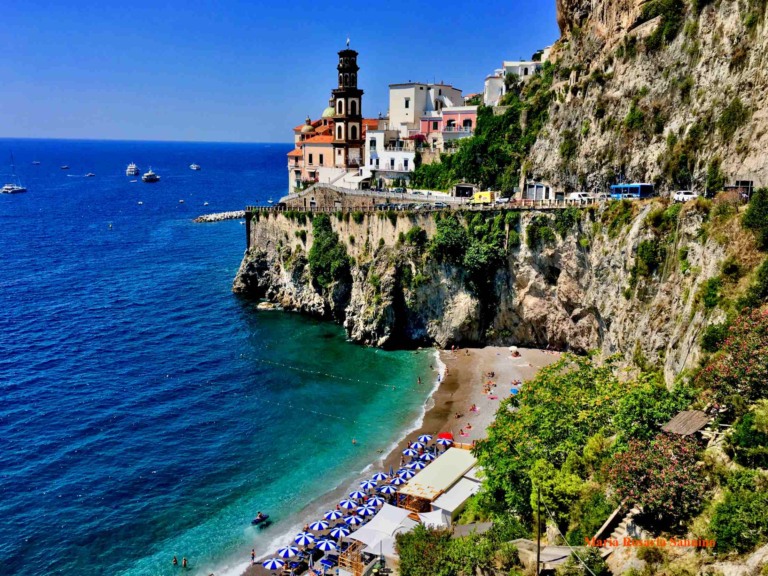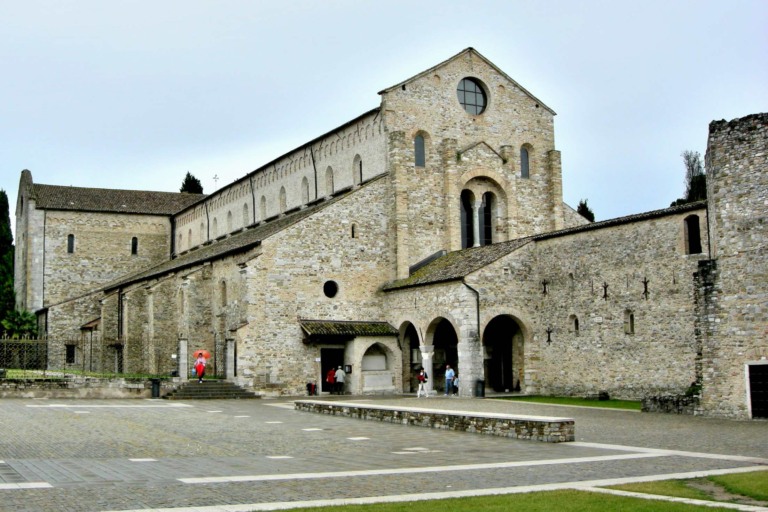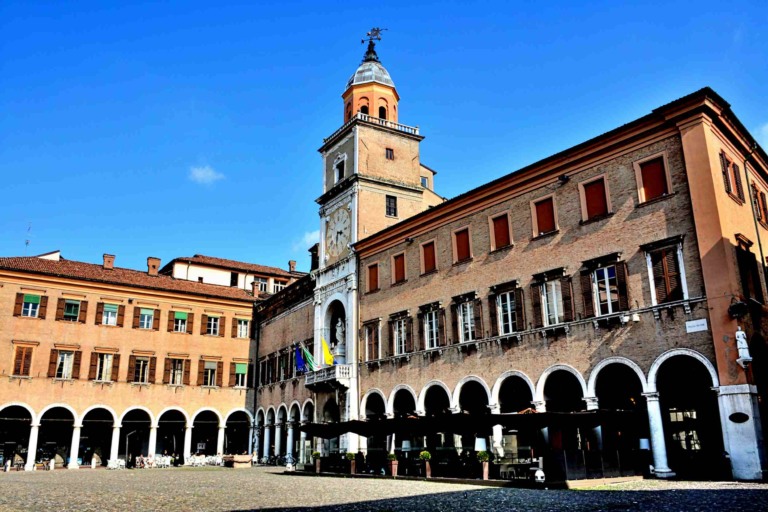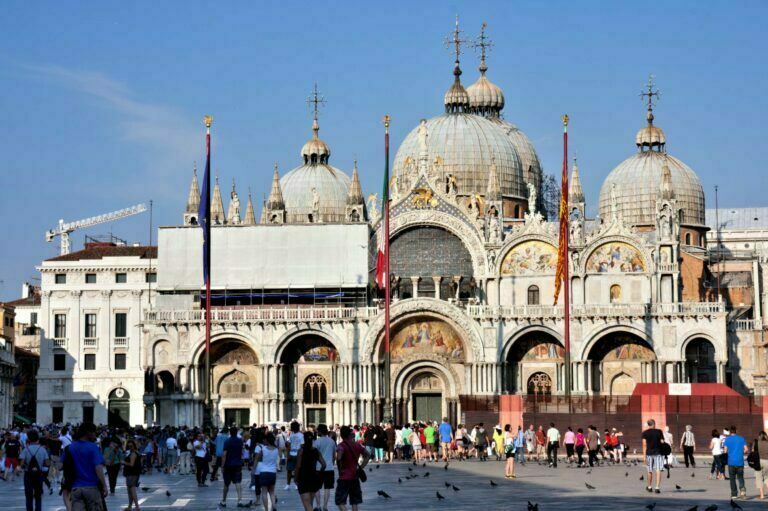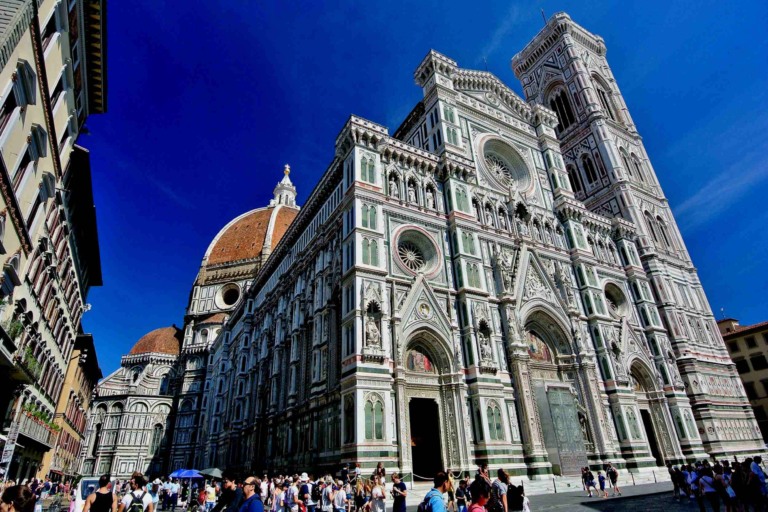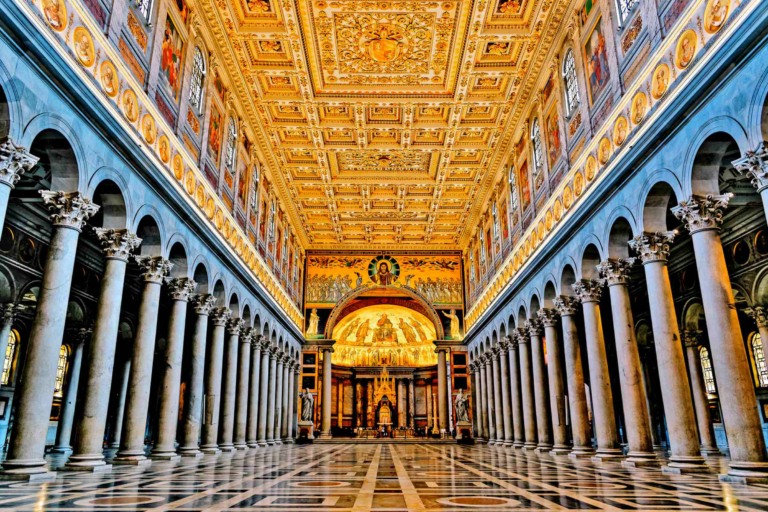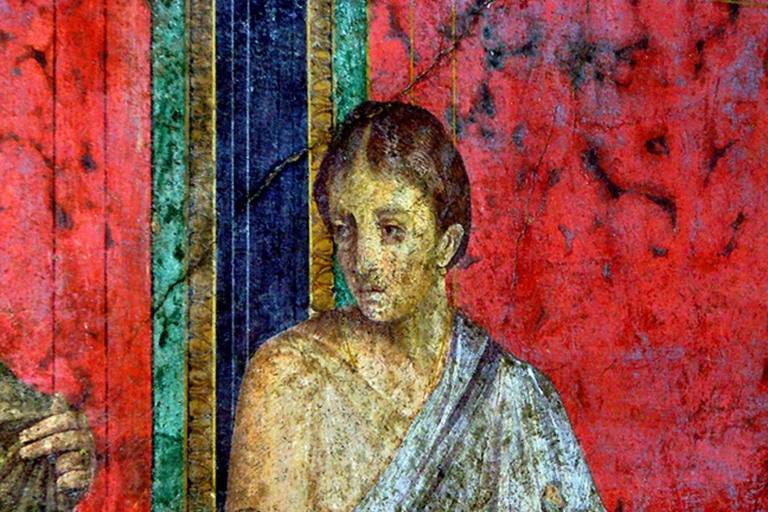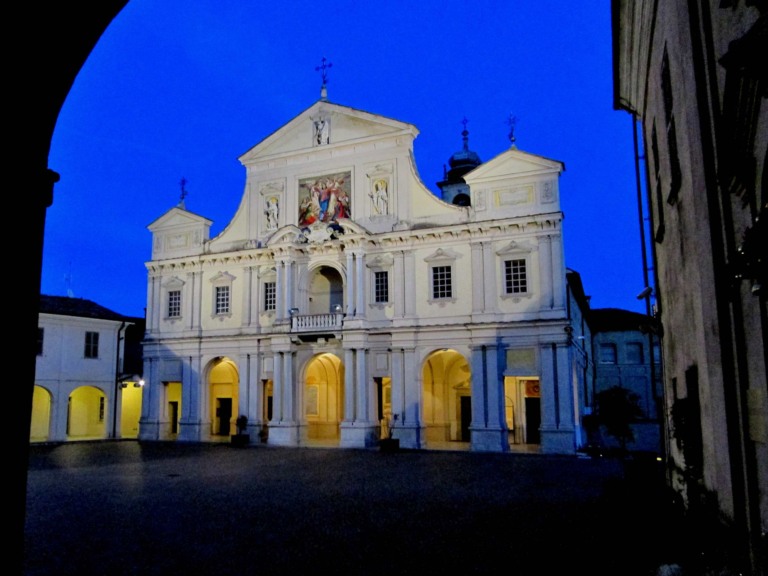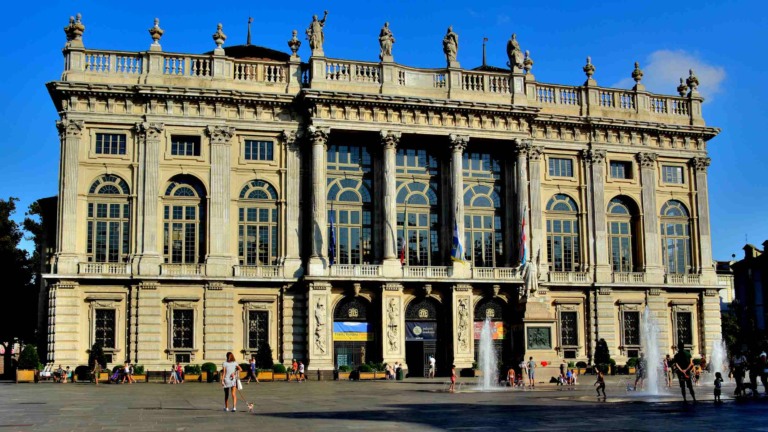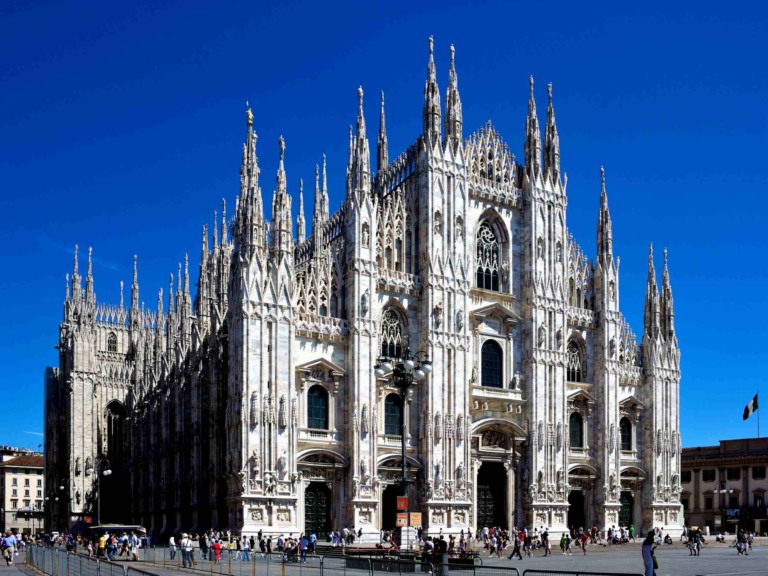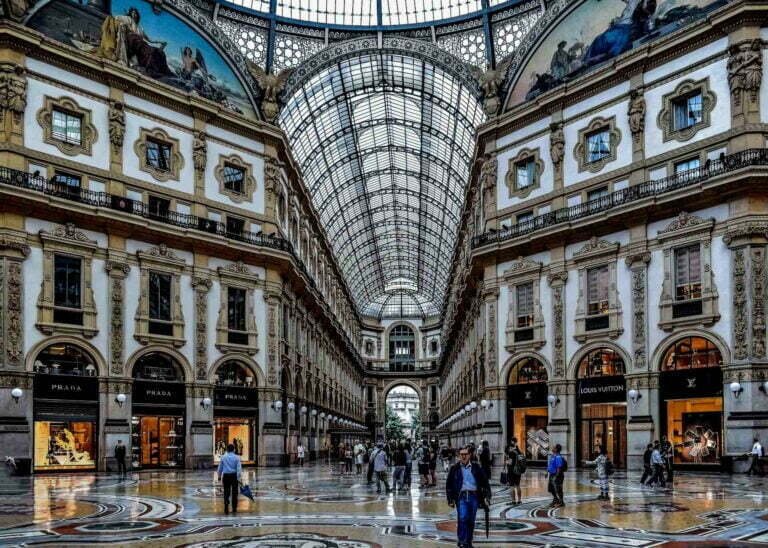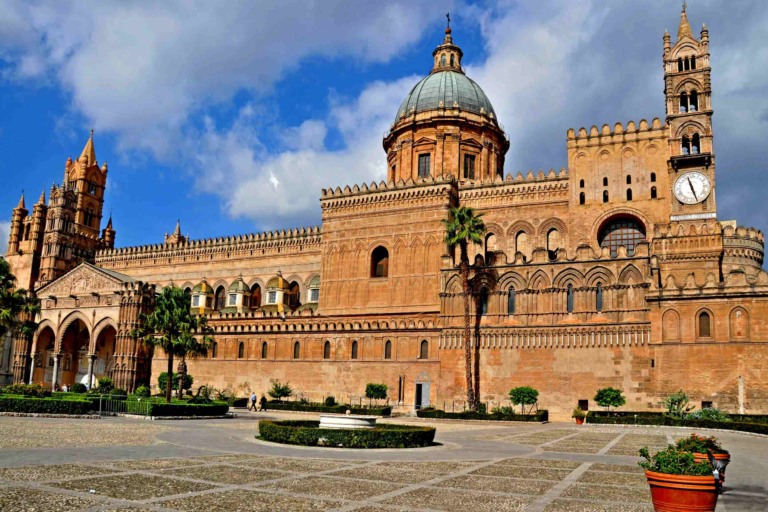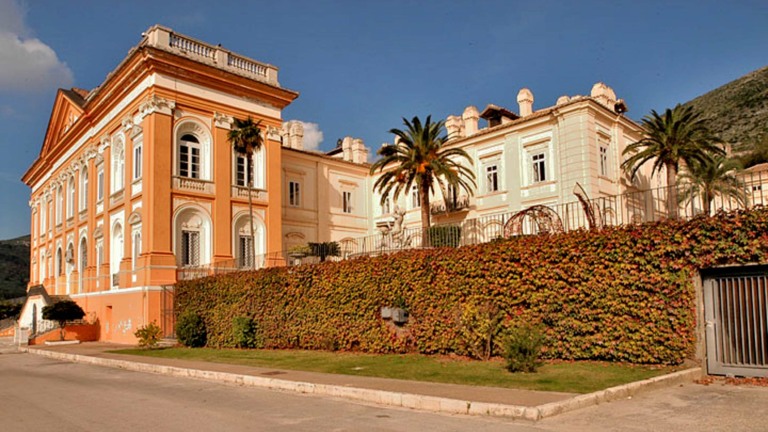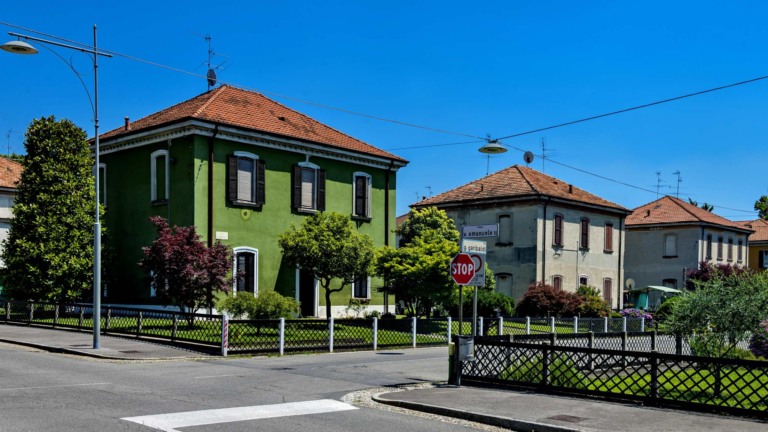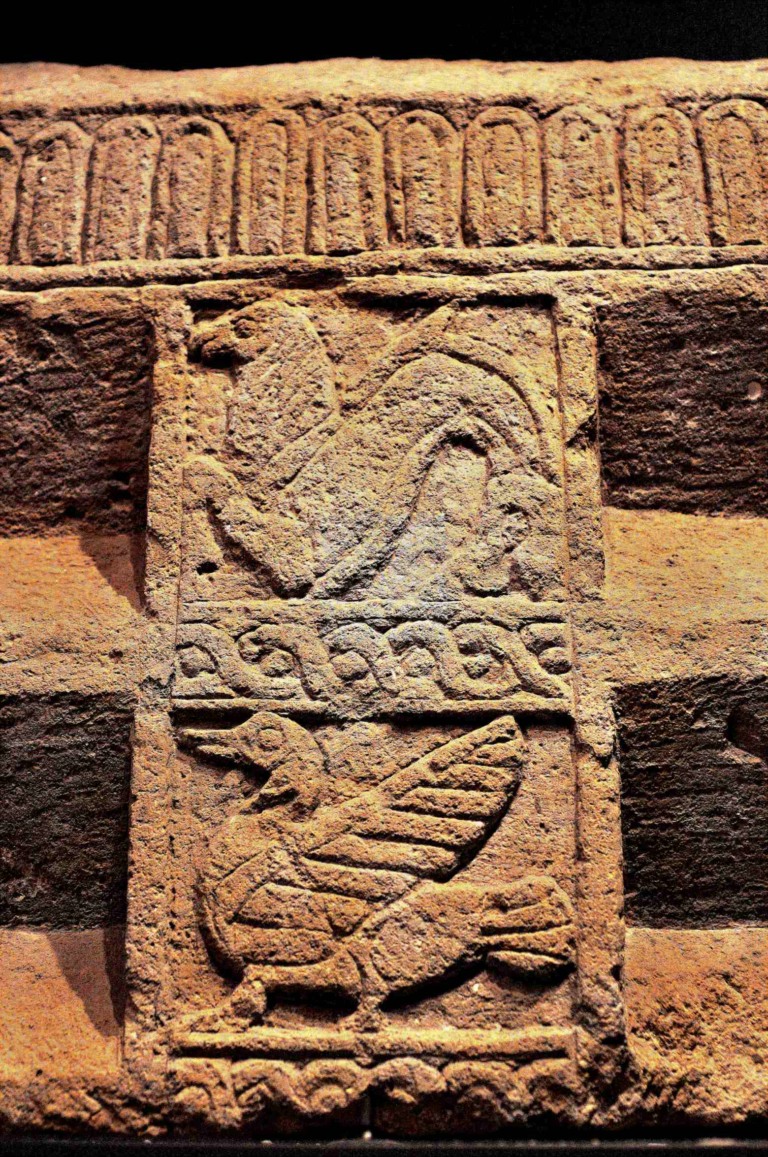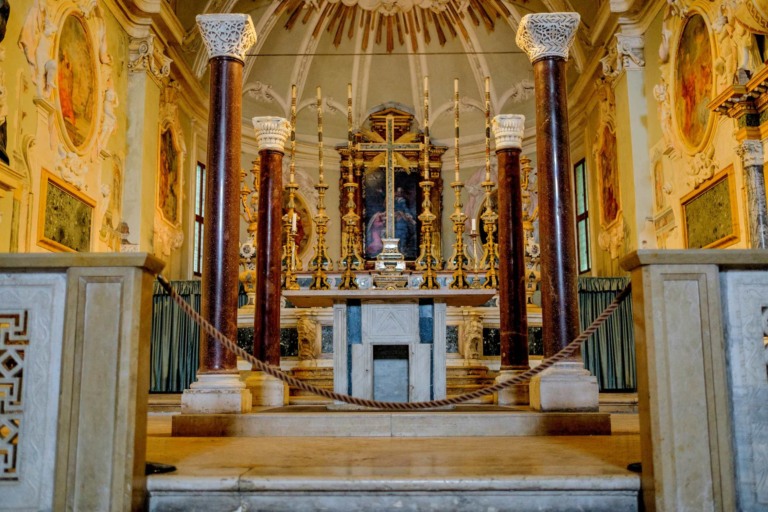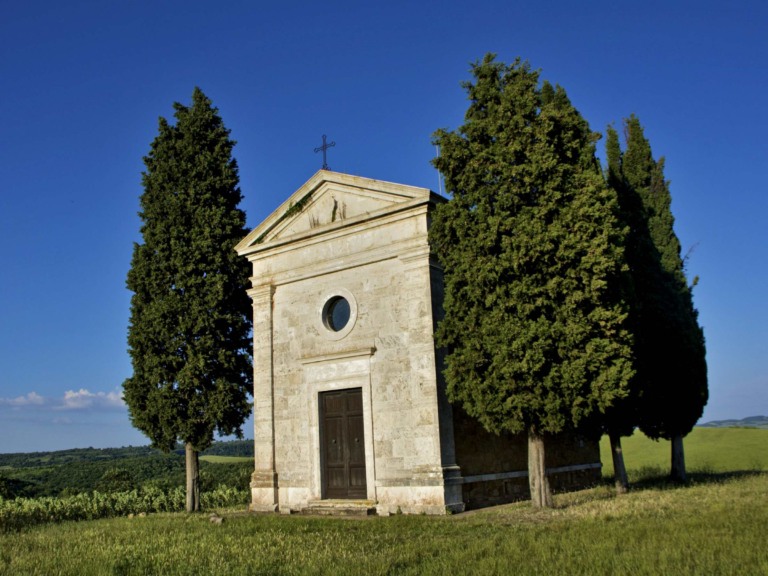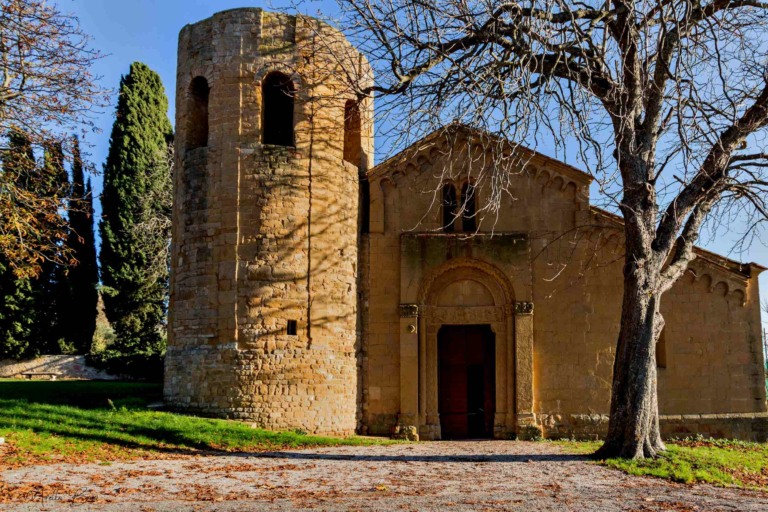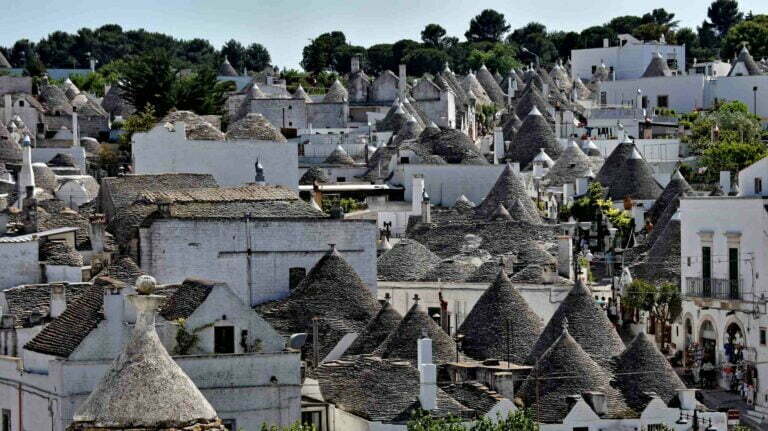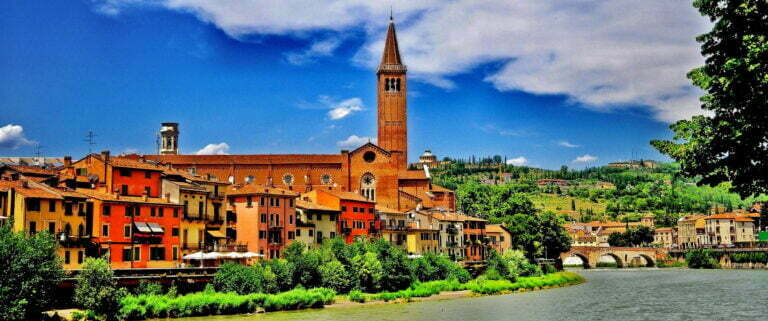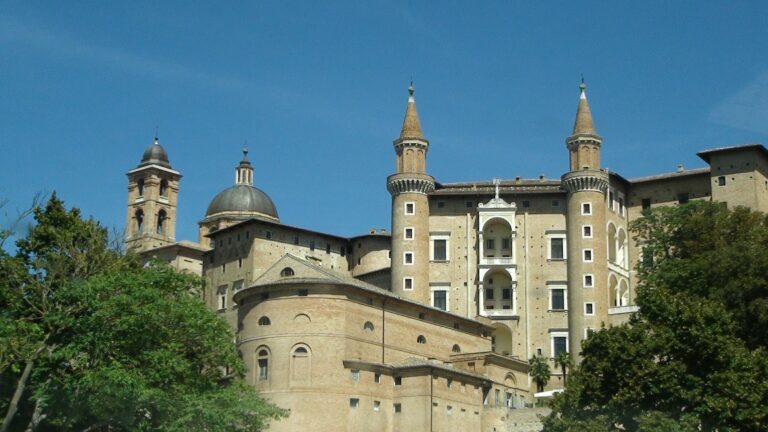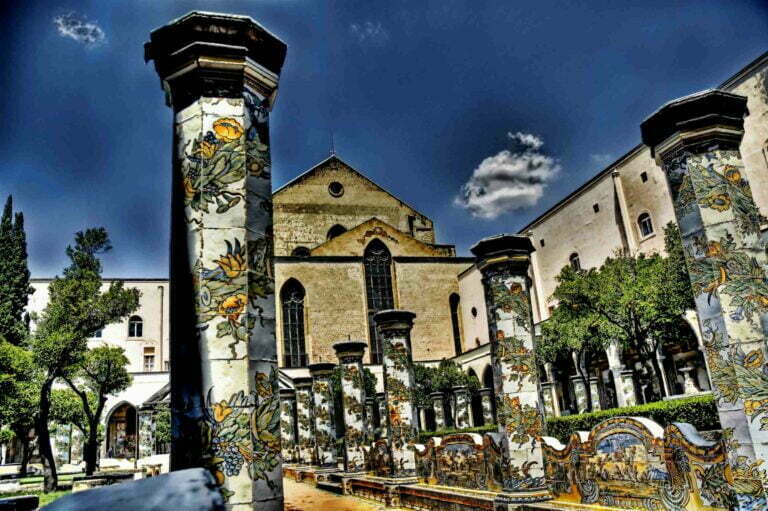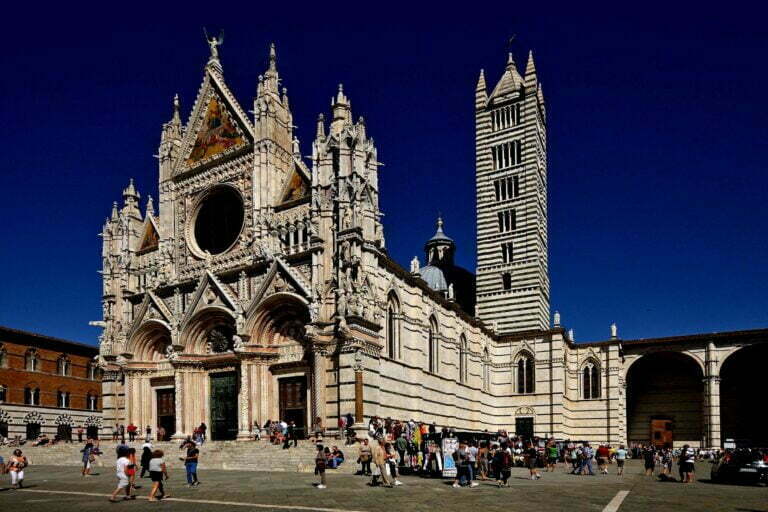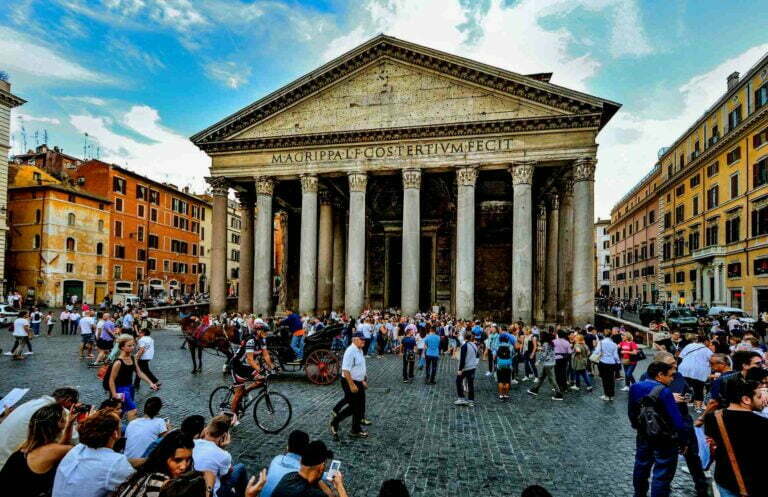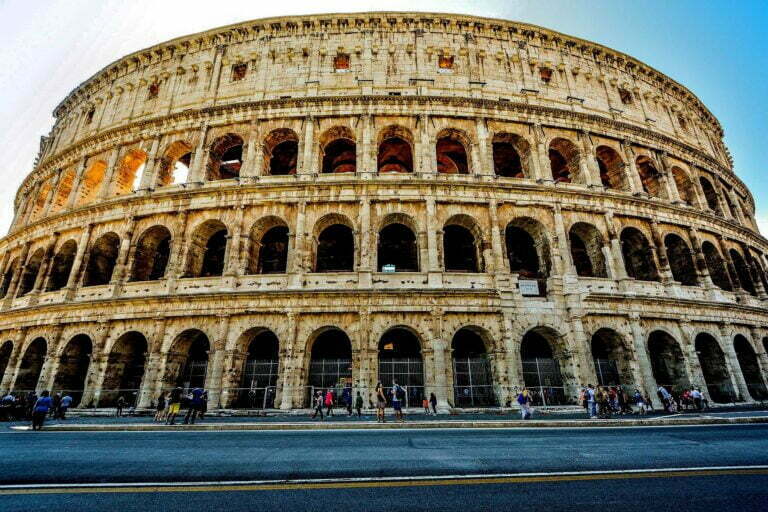The history of Vatican City is a long and complex one, closely intertwined with the history of the Roman Catholic Church and the city of Rome itself. Here's a detailed overview of the history of Vatican City: The History of Vatican City 1. Early History: The Vatican area was originally a marshy plain on the west bank of the Tiber River, just outside ancient Rome. In the 1st century AD, a Christian cemetery was established on Vatican Hill, traditionally believed to be the burial place of Saint Peter, one of Jesus Christ's apostles. 2. Construction of Old St. Peter's Basilica: In the 4th century AD, Emperor Constantine legalized Christianity and initiated the construction of the first St. Peter's Basilica over the supposed tomb of Saint Peter. The ...
Things to do in Vicenza Italy: Vicenza, a beautiful city in northern Italy, is known for its rich history, stunning architecture, and cultural heritage. Here are some things to do and places to visit in Vicenza: Things to do in Vicenza Italy 1. Teatro Olimpico (Olympic Theater): Visit this iconic Renaissance theater, designed by Andrea Palladio. It's one of the oldest surviving indoor theaters in the world and features a stunning stage set designed to resemble ancient Roman theaters. 2. Villa Rotonda: Also known as Villa Almerico-Capra, this villa is one of Palladio's most famous works. You can admire its symmetrical design and explore the surrounding gardens. 3. Basilica Palladiana: This historic basilica, with its unique double loggia, is an architectural masterpiece. You can take an elevator ...
Vicenza and Palladian Villas of the Veneto: The City of Vicenza and the Palladian Villas of the Veneto collectively constitute a UNESCO World Heritage Site in Italy. This site encompasses the historic city of Vicenza and a group of Palladian villas located in the Veneto region. Here is an overview: Vicenza and Palladian Villas of the Veneto Initially inscribed on the World Heritage List in 1994, the site originally included only the city of Vicenza with its twenty-three buildings attributed to the renowned architect Andrea Palladio, along with three villas located outside the city limits. Later, in 1996, an extension to the site included an additional twenty-one villas located in various provinces of the Veneto region. Vicenza Italy History Vicenza, founded in the 2nd century BC in ...
Amalfi Coast Itinerary: A well-planned itinerary for exploring the Amalfi Coast can help you make the most of your visit to this stunning region. Here's a suggested itinerary for a memorable trip to the Amalfi Coast: 7 days Amalfi Coast Itinerary Day 1: Arrival in Sorrento: Arrive in Sorrento, a charming town on the Sorrentine Peninsula that serves as a gateway to the Amalfi Coast. Spend the day exploring Sorrento's historic center, shopping for local crafts, and enjoying panoramic views of the Bay of Naples. Day 2: Sorrento to Positano: Take the SITA bus from Sorrento to Positano, a picturesque village known for its pastel-colored houses. Explore the narrow streets, visit the beach, and relax by the sea. Don't miss the Church of Santa Maria Assunta, with ...
Non touristy things to do in Amalfi Coast. Exploring the Amalfi Coast away from the tourist crowds can reveal its authentic charm and hidden gems. Here are some non-touristy things to do in the Amalfi Coast: Non Touristy Things to do in Amalfi Coast 1. Visit Minori and Maiori: These neighboring towns are often overshadowed by Amalfi and Positano. Minori is known for its Roman villa ruins, and Maiori boasts a long sandy beach, perfect for a relaxing day. 2. Hiking Trails: While popular trails like the Path of the Gods can get crowded, there are lesser-known hiking paths such as the Valle delle Ferriere near Amalfi and the Punta Campanella trail near Sorrento, which offer stunning views without the crowds. 3. Explore Cetara: This small fishing ...
The Costiera Amalfitana, which runs along the southern coast of the Sorrentine Peninsula within the Salerno province, can rightfully be described as a landscape of exceptional cultural significance, shaped by the remarkable interplay of nature and human endeavor. Its dramatic topography and historical evolution have given rise to extraordinary cultural and natural scenic values. Costiera Amalfitana Italy Here, nature remains untamed yet seamlessly interwoven with the fruits of human labor. The landscape is characterized by rocky terrain, lush woodlands, and aromatic maquis, punctuated by citrus groves and vineyards ingeniously cultivated wherever suitable terrain could be found. Encompassing a vast expanse of 11,231 hectares, this expansive region spans 15 municipalities, agricultural lands, and three natural reserves. Inhabited since prehistoric times, as evidenced by the discovery of Palaeolithic and ...
Things to do in Aquileia: The Archaeological Area and the Patriarchal Basilica of Aquileia, located in the Friuli-Venezia Giulia region of Italy, is a UNESCO World Heritage Site recognized for its historical and cultural significance. Here's more information about this remarkable site: Archaeological Area and the Patriarchal Basilica of Aquileia Archaeological Area of Aquileia 1. Roman Port and Wharf: Aquileia was founded as a Roman colony in 181 BC and served as an important military and commercial port. The archaeological site includes the remains of the Roman port and its wharf, offering insights into ancient maritime activities. 2. Forum: The forum of Aquileia is one of the largest in the Roman world. It was the political, religious, and economic center of the city. Visitors can see the ...
Modena Cathedral Torre Civica Piazza Grande: The Cathedral, Torre Civica (Civic Tower), and Piazza Grande in Modena, Italy, are significant historical and architectural landmarks that collectively reflect the city's rich history and cultural heritage. Here's a brief overview of each: Modena Cathedral Torre Civica Piazza Grande 1. Modena Cathedral (Cattedrale Metropolitana di Santa Maria Assunta): Modena Cathedral is a masterpiece of Romanesque architecture and is recognized as a UNESCO World Heritage Site. Construction of the cathedral began in the 11th century and continued over several centuries. The cathedral features a stunning facade adorned with intricate reliefs, including the famous "Last Judgment" by Wiligelmo. The interior showcases rich mosaics, sculptures, and ornate decorations. The Torre Civica stands adjacent to the cathedral and is known for its characteristic leaning ...
Venice and its Lagoon, located in northeastern Italy, are a UNESCO World Heritage Site renowned for their unique urban and cultural heritage as well as their ecological significance. The history of Venice is a fascinating tale of a city built on water, cultural exchange, trade, and artistic achievement. Here's an overview of Venice's history and its iconic lagoon: Venice and its Lagoon and its History 1. Early History and Foundation: Venice's history dates back to the 5th century AD, when people sought refuge from invading barbarian tribes on the islands of the Venetian Lagoon. The city's unique setting on a series of islands connected by canals and bridges fostered the development of a distinct maritime culture and way of life. 2. Rise of a Maritime Power: Venice ...
The Historic Centre of Florence is a UNESCO World Heritage Site and a cultural treasure trove located in the heart of Florence, Italy. This city is renowned for its artistic heritage, stunning architecture, and historical significance. Here are some of the prominent landmarks you can explore in the historic center of Florence: Historic Centre of Florence 1. Florence Cathedral (Cattedrale di Santa Maria del Fiore): The iconic cathedral, commonly known as the Duomo, features a magnificent dome designed by Filippo Brunelleschi. Its exterior is adorned with intricate marble panels, and the interior houses stunning frescoes and artwork. 2. Giotto's Campanile: Adjacent to the cathedral, this bell tower offers panoramic views of Florence. It is a masterpiece of Gothic architecture and is adorned with intricate marble decorations. 3 ...
Valley of the Temples Sicily. Valley of the Temples in Agrigento: The Archaeological Area of Agrigento, also known as the Valley of the Temples (Valle dei Templi), is a UNESCO World Heritage Site located in Agrigento, a city on the southern coast of Sicily, Italy. Valley of the Temples Italy This archaeological site is renowned for its exceptional collection of ancient Greek ruins and temples, which provide insight into the rich history and architectural achievements of the ancient world. Archaeological Area of Agrigento 1. Ancient Greek Temples: The Valley of the Temples houses a series of well-preserved Doric-style ancient Greek temples, most of which were constructed during the 5th and 6th centuries BC. These temples were dedicated to various deities and reflect the cultural and religious significance ...
Rome City Center Holy See: The Historic Centre of Rome, the Properties of the Holy See in that City Enjoying Extraterritorial Rights, and San Paolo Fuori le Mura collectively form a UNESCO World Heritage Site in the city of Rome, Italy. These sites are of immense historical, cultural, and religious significance and offer a glimpse into the city's rich past. Here's a brief overview of each site: Historic Centre of Rome, the Properties of the Holy See in that City Enjoying Extraterritorial Rights and San Paolo Fuori le Mura 1. Historic Centre of Rome: The historic center of Rome encompasses iconic landmarks such as the Colosseum, Roman Forum, Palatine Hill, Pantheon, and Piazza Navona, among others. These monuments represent different periods of Roman history, from the ancient ...
Pompeii Herculaneum Torre Annunziata: The Archaeological Areas of Pompeii, Herculaneum, and Torre Annunziata are three ancient Roman cities in the Campania region of Italy. These sites were buried by the eruption of Mount Vesuvius in AD 79 and have been exceptionally well-preserved over the centuries. They provide valuable insights into Roman life and culture during the 1st century AD. Archaeological Areas of Pompei Herculaneum Torre Annunziata 1. Pompeii: Pompeii was a bustling Roman city known for its commercial importance and vibrant culture. The eruption of Mount Vesuvius buried the city under a thick layer of volcanic ash and pumice, preserving it for centuries. Excavations have revealed streets, houses, temples, and public buildings, offering a comprehensive view of Roman urban life. Notable structures include the Forum, the Temple ...
The Sacri Monti of Piedmont and Lombardy consist of nine distinct complexes, each located on a hill or mountain in northern Italy. These complexes are a series of chapels and religious buildings dedicated to various religious themes and collectively designated as a UNESCO World Heritage Site in 2003 due to their cultural, artistic, and spiritual significance. Here are brief details of each of the nine Sacri Monti: Sacri Monti of Piedmont and Lombardy 1. Sacro Monte di Varallo (Varallo Sesia, Piedmont): Founded in 1486 by Franciscan friar Bernardino Caimi, this complex is the oldest of the Sacri Monti. It features 45 chapels with scenes from the lives of Jesus and the Virgin Mary depicted through statues and frescoes. 2. Sacro Monte di Crea (Serralunga di Crea, Piedmont): ...
The Residences of the Royal House of Savoy are a series of palaces, castles, and residences located in various regions of Italy, primarily in Piedmont and Turin. These residences were once inhabited by the Royal House of Savoy, one of the most significant ruling families in European history. Residences of the Royal House of Savoy Many of these sites have been recognized as UNESCO World Heritage Sites due to their historical and architectural importance. Here are some of the most notable residences of the Royal House of Savoy: 1. The Royal Palace of Turin (Palazzo Reale di Torino): Located in the heart of Turin, this magnificent palace served as the primary residence of the Royal House of Savoy. It features opulent rooms, grand halls, and beautiful gardens ...
Milan Cathedral, known as "Duomo di Milano" in Italian, is one of the most iconic landmarks in Italy and one of the largest Gothic cathedrals in the world. It is located in the heart of Milan, the capital of Lombardy, and serves as a symbol of the city's rich history and architectural grandeur. Key features of Milan Cathedral: Milan Cathedral History 1. Milan Cathedral Architecture: Construction of the cathedral began in 1386 under the direction of Archbishop Antonio da Saluzzo. It features a stunning Gothic architectural style with a blend of French and German influences. The facade is adorned with intricate statues, spires, and decorative elements. Regarding the construction of Milan Cathedral, it took several centuries to complete. 2. Construction Start: The construction of Milan Cathedral, officially ...
Milan things to do and Milan places to visit. Milan, Italy’s vibrant and cosmopolitan city and the capital of Lombardy, offers a plethora of attractions and activities to suit various interests. Here are some popular things to do in Milan: Milan Things To Do 1. Visit Milan Cathedral (Duomo di Milano): Explore one of the world's largest Gothic cathedrals. Admire the intricate architecture, climb to the rooftop for panoramic views of the city, and visit the cathedral's museum. 2. Explore Galleria Vittorio Emanuele II: Walk through this elegant shopping arcade, known as one of the world's oldest shopping malls. Marvel at the stunning architecture, shop at luxury boutiques, and enjoy a meal or coffee at one of the charming cafés. 3. Admire Leonardo da Vinci's "The Last ...
The history of Milan dates back to ancient times and has witnessed the rise and fall of various civilizations. The history of Milan is a tapestry of ancient civilizations, artistic achievements, political struggles, and economic growth. It has shaped the city's character and contributed to its status as a prominent cultural and economic center in Italy and beyond. Here is an overview of the history of Milan: History of Milan, Italy 1. Ancient Milan: Milan's origins can be traced back to the Celts, who settled in the region around 400 BC. The city then came under Roman rule in the 3rd century BC and flourished as a key trading and strategic center within the Roman Empire. 2. Medieval Period: After the fall of the Western Roman Empire ...
The Arab-Norman Palermo and the Cathedral Churches of Cefalú and Monreale represent a remarkable fusion of cultures and architectural traditions. They highlight the historical and artistic exchange between Arab, Norman, and European cultures, showcasing the unique heritage of Sicily. Arab-Norman Palermo Monreale Since 2015, this UNESCO World Heritage Site in Italy has encompassed several significant historical and architectural landmarks in Sicily: two palaces, three churches, a cathedral, and a bridge in Palermo, as well as the cathedrals of Cefalù and Monreale. The Arab-Norman Palermo and the Cathedral Churches of Cefalù and Monreale are a series of nine religious and civic structures located on the northern coast of Sicily, dating from the era of the Norman Kingdom of Sicily (1130–1194). These structures include: Palazzo dei Normanni: The Palazzo ...
Royal Palace Caserta Italy: The 18th-Century Royal Palace at Caserta, also known as the Royal Palace of Caserta, is a magnificent palace located in Caserta, Italy. It was commissioned by the Bourbon King of Naples, Charles III, and designed by the Italian architect Luigi Vanvitelli. Construction of the palace began in 1752 and was completed in 1845. Royal Palace Caserta Italy The Royal Palace at Caserta is one of the largest royal residences in the world and is often compared to the Palace of Versailles in France. It covers an area of about 47,000 square meters and consists of over 1,200 rooms, including royal apartments, grand halls, and a large theater. The architecture of the palace is a blend of Baroque and Neoclassical styles, with grand facades, ...
Crespi d'Adda is a village in northern Italy and a hamlet (frazione) of Capriate San Gervasio, which is a town in the province of Bergamo, Lombardy. It is a historic village and a great example of the "company towns" built in Europe and North America in the late 1800s and early 1900s to meet the needs of workers. The site is still there and is used for some industrial purposes, but its survival is now threatened by changes in the economy and society. Crespi d'Adda History In 1869, a textile maker from Busto Arsizio (Varese) named Cristoforo Benigno Crespi bought the 1-kilometer valley between the rivers Brembo and Adda, south of Capriate, so that he could build a cotton mill on the Adda's banks. In his cotton ...
The Etruscan Necropolises of Cerveteri and Tarquinia have been a UNESCO World Heritage Site since 2004. They are in the Italian provinces of Rome and Viterbo, in the region of Latium. These two large Etruscan cemeteries show how people were buried in different ways from the 9th century BC to the 1st century BC. They also show what the Etruscan culture was able to do. Etruscan Necropolises of Cerveteri and Tarquinia Which grew into the first urban society in the northern Mediterranean over a period of nine centuries. Some of the Cerveteri Etruscan tombs are huge, carved out of rock, and topped by huge burial mounds. Many of them have carvings on the walls, while others have amazing paintings. Banditaccia is the name of the cemetery near ...
Ravenna was the capital of the Roman Empire in the 5th century. From the 6th century to the 8th century, it was the capital of Byzantine Italy. It has a unique collection of mosaics and monuments from the time of the early Christians. Christian Monuments of Ravenna became a UNESCO World Heritage Site in 1996. There are eight buildings in it. Between the 5th and 6th centuries, these were built. Where is Ravenna Italy Here are the eight places on this list. The Mausoleum of Galla Placidia, the Neonian Baptistery, the Basilica of Sant'Apollinare Nuovo, the Arian Baptistery, the Archbishop's Chapel, the Mausoleum of Theodoric, the Church of San Vitale, and the Basilica of Sant'Apollinare in Classe. They show a lot of artistic skill, with a great ...
Val d'Orcia is in the Province of Siena, which is in the Tuscany area of central Italy. It is a rural agricultural landscape that still has a lot of the layout, style, and character of the Renaissance. Val d'Orcia's landscape is full of signs that people have been living there for thousands of years. During the time of the Etruscans, the area was important, and it grew during the time of the Roman Empire. Val d Orcia Tuscany During the Middle Ages, farming and herding fell, and a lot of the land seems to have been left empty. In the 10th and 11th centuries, when the economy was doing well and the government was stable, monasteries were built and the Roman road Via Francigena was used more ...
Pienza, Italy, is a small town in the Val d'Orcia that is on top of a beautiful hill. It has a long and interesting history. Pienza is in the southern part of Tuscany. It is in the Val d'Orcia region of Tuscany. It is only 15 kilometers from Montepulciano, 20 kilometers from Montalcino, and about 50 kilometers from Siena. Most pictures of Tuscany that you see on postcards, travel posters, or even TV documentaries were taken in Val d'Orcia, which is in the south of the region between Siena and Grosseto. Pienza Italy This valley is a huge, protected area that is cut through by the river Orcia. It is known for its beautiful scenery, charming small towns, and lots of good food and wine. Pienza is ...
The Trulli of Alberobello have been listed as a UNESCO World Heritage Site since 1996. Alberobello is a small town and comune in Apulia, which is in the south of Italy. It is part of the Metropolitan City of Bari. It has 10,735 people living there, and its unique trullo buildings are well-known. Trulli (singular: trullo) are traditional dry-stone huts in Apulia with a conical roof. Their style of building is unique to the Itria Valley in the Murge area of Apulia. Trulli of Alberobello Trulli were usually built by small business owners or farm workers as temporary field shelters and storage sheds or as permanent homes. In the town of Alberobello, which is in the province of Bari, trulli are built into whole neighborhoods. The 19th ...
Verona, Italy, is both a city and a province. It is at the foot of the Lessini Mountains, about 65 miles (105 km) west of Venice. It is in the Veneto Region of Italy, and the Adige River flows around it on two sides. It has been a UNESCO World Heritage Site since 2000. An an ancient tribe, most likely the Euganei or Raeti, built the city of Verona. Later, the Gallic Cenomani lived there. Verona Italy History It became a Roman town in 89 BCE, and its importance grew quickly because it was at the crossing of major roads that went from Italy to northern Europe. Catullus, the writer, was born in a certain place. In 489, when the Ostrogoth king Theodoric attacked Verona, he built ...
The Historic Centre of Urbino, which experienced a great cultural flowering in the 15th century, is a small hill town in the Province of Pesaro, Marche Region of Italy, and was a UNESCO World Heritage Site from 1998 onwards. Where is Urbino Urbino, in the Marche region of Italy, was built by the Umbrians, an ancient Italian people. Urbino was afterwards inhabited by the Etruscans, Celts, and Gauls, as well as the Romans in the third century BCE. Urbino, Italy, was finally given to the Montefeltro family in the 12th century after falling under church administration in the 9th century. Under the leadership of Federico da Montefeltro (1444–82) and his son Guidobaldo (1482–1508), it became the seat of a duchy and reached its pinnacle as a center ...
Naples City is on the west coast of the Italian peninsula, about 120 miles southeast of Rome. It is in southern Italy. Naples is the city of the southern Italian region of Campania. People also call it "old Neapolis." People who had left an old Greek colony on the north side of the Bay of Naples, southeast of Rome, built it around 600 BCE. The Romans took it over in the 4th century BCE. Naples changed hands between the Byzantines and the Saracens many times. Naples Italy History In the 11th century, the Normans took control of Sicily. It was the capital of the Kingdom of the Two Sicilies and the Kingdom of Naples from that time until the 19th century. Giuseppe de Garibaldi led an army ...
San Gimignano is a relay point for pilgrims traveling to and from Rome on the Via Francigena, 56 km south of Florence, in the Tuscany region of Italy, and was a UNESCO World Heritage Site from 1990 onwards. Historic Centre of San Gimignano Historic Centre of San Gimignano, once called the "City of Silva," lies about 20 miles (32 kilometers) northwest of Siena. The town was eventually renamed Gimignano after the Bishop of Modena (d. 397), who saved it from a barbarian attack. The town was governed by two great, always-fighting families during the Middle Ages: (1) the Ardinghelli (Guelf) and (2) the Salvucci (Ghibelline). The city's resources were depleted in 1352, and it was forced to submit to Florence. San Gimignano is known for its Gothic ...
Siena City is about 30 miles (48 km) south of Florence. It is in the Toscana or Tuscany region of central Italy. It became a UNESCO World Heritage Site in 1995. Before Florence took over in the 13th and 14th centuries, the Historic Centre of Siena was an important place in history because it was a center for business and banking. Where is Siena Italy Siena was built on the site of an Etruscan village, which became the Roman city of Sena Julia. This colony disappeared, but the Lombard kings made the new Siena that grew up in its place very successful. Siena Italy History In the 12th century, Siena became a town that took care of itself. Because of economic competition and territorial disputes with neighboring ...
The Pantheon in Italy is one of the Roman buildings that has survived the best. The building was finished around 126–128 A.D., during the reign of Emperor Hadrian. At the time it was built, the rotunda of the Pantheon had the largest domed ceiling in the world. The Pantheon was built on the site of a building with the same name that was there before. Senator Marcus Agrippa built the Pantheon in 25 B.C., and it is thought that it was meant to be a temple for the Roman gods. It has been an extended part of a UNESCO World Heritage Site since 1980. The Pantheon Because there aren't many written records, we don't know much about the modern Pantheon, like who made it and how long ...
The Roman Colosseum in Rome, Italy, is an oval amphitheater. The huge stone amphitheater called the Colosseum is just east of the Roman Forum. It was built between 70 and 72 AD as a gift to the Roman people by Emperor Vespasian of the Flavian dynasty. In the year 80 AD, Titus, who was Vespasian's son, opened the Colosseum, which was officially called the Flavian Amphitheater, with 100 days of games. These games included gladiator fights and fights between wild animals. After being used for four hundred years, the beautiful arena fell into disrepair, and until the 18th century, it was used to get materials for building. Roman Colosseum History Facts Even though, over time, two-thirds of the original Colosseum were destroyed. The amphitheater is still a ...

